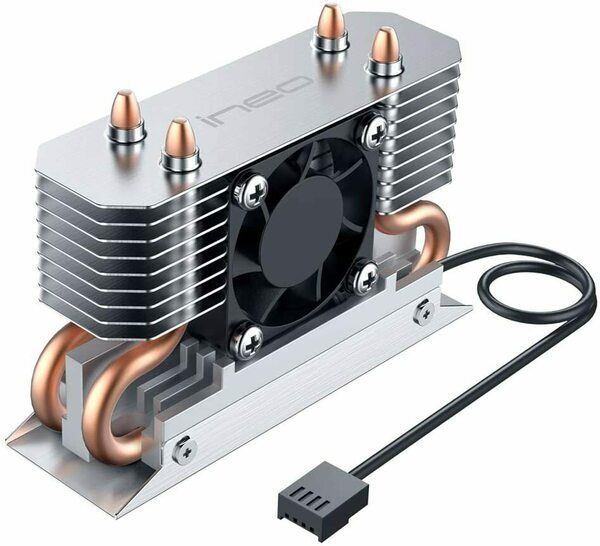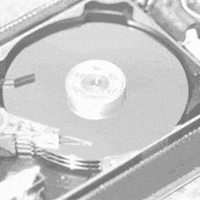
(Jake Givens/Unsplash)
Not to look a gift horse in the you-know-what, but we have made some pretty amazing strides in file storage technology in recent years.
A decade ago, most laptops came with metal hard drives that would break down over time if you just looked at them funny. And when solid-state drives (SSDs) first saw use in mainstream computers—the first one I can remember was the first generation of the MacBook Air in 2008—it was an extreme upgrade option that added a thousand dollars to the price of the machine. (It was the monitor stand of the Steve Jobs era.)
Now, nearly all modern computers come with SSDs that are at least twice as fast as the ones previously used in computers a few years prior. Often, much faster. The SSD in the machine I’m typing on now easily passes the 2,000-megabyte mark in reads, which was an unheard-of number before, say, 2016. And on top of that, the drive is no bigger than a stick of gum.
This is great for consumers—it makes our devices run faster (especially for things like games, 3D rendering, and video editing) while shrinking the size of the device.

A Samsung NVMe SSD, which relies on the PCIe 3.0 standard. (Ilya Plekhanov/Wikimedia Commons)
But there’s a problem. The technology keeps getting faster, but there are signs of a major bottleneck that could prevent modern SSDs, using NVMe (Non-Volatile Memory Express) technology, from reaching their full potential without a whole new setup to calm down the heat.
In a recent interview with MSI, Phison Chief Technology Officer Sebastien Jean put out, effectively, a warning that SSD technology was about to reach the limits of what’s possible with the ports we currently use. Per Phison Blog:
As the speed continues to go up with each new generation, our challenge will continue to be to manage the heat. But if you look at the bigger question of where PCs are going, there’s an understanding in the client space that M.2 PCIe Gen5 is sort of hitting the limit of where it can go and the actual interface or the connector will become a bottleneck for future speeds. So new connectors are being developed, and they’ll be available in the next few years, which greatly increase both the signal integrity and the heat dissipation capability of the SSD through conduction to the motherboard.
As TechSpot explains, this could mean that you need to have a fan for yet another component in your gaming rig.
So this doesn’t sound great—not only are we losing the easy compatibility we’ve gained with recent generations of SSDs, but the ones we’re about to get in high-end computers are likely to run so hot they need a cooling supply.

The ineo M.2 2280 SSD Rocket Heatsink, an example of active cooling for an NVMe SSD. (via Amazon)
This is not great news, as it comes at a time when SSD storage is actually getting a more prominent role within the PC: Microsoft recently released something called the DirectStorage API, which is anticipated to bring about the ability to cache storage directly on graphics cards, without the CPU playing intermediary—which, for gamers means that game speeds are about to improve.
But I’d like to point out that it was just a few years ago that storage devices were not only big and loud, but they were slow. For most people, NVMe devices based on the PCIe 3 standard is already basically screaming, and PCIe 4-based NVMe storage (which the latest video game consoles use) is only now trickling out to the public.
I get that standards bodies have to keep improving, but the improvements have been so dramatic that it changes the experience overnight. We’re literally talking about, in a single generation, going from video game consoles that sported spinning hard drives with 100 MBps read speeds, to consoles that rely on PCIe NVMe drives that count read speeds in the gigabytes. That’s a massive leap in speed in just seven years, one that has basically redefined that the PS5 and the Xbox Series X can do, and then some.
I’m not necessarily saying, “stop innovating,” but I do think there’s a realistic case to be made that if more active cooling is required on top of what are already fan-packed enthusiast systems, it might be time to take a step back and slow-roll the SSD rollout—or at least, as consumers, hold off on the next generation until they figure it out.
It reminds me, in a way, of the push for resolutions beyond 4K. It’s not that a higher resolution wouldn’t be nice, but there’s a definite risk of diminishing returns at this point, and we really need a new generation of technology to show the path forward.
For now, everyone should embrace the fact that their laptop from work flies thanks to the innovations in SSDs we’ve seen over the last decade.
Time limit given ⏲: 30 minutes
Time left on clock ⏲: 1 minute, 23 seconds



